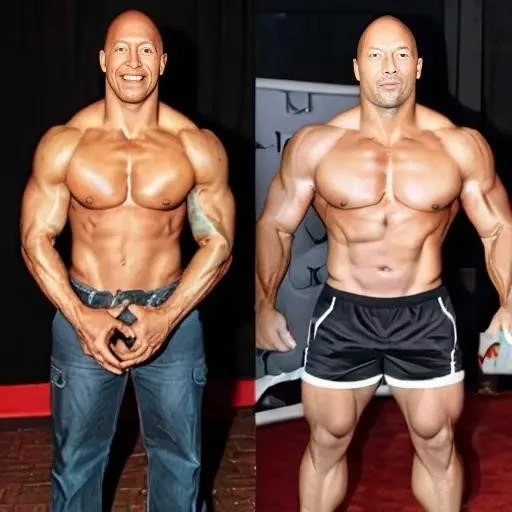The ubiquitous hoodie, once relegated to the realms of sportswear and rebellious youth, has surprisingly emerged as a powerful symbol of diversity and inclusivity in modern society. Beyond its practical function as a warm and comfortable garment, the hoodie transcends socioeconomic boundaries and cultural differences, representing a shared human experience and a subtle act of defiance against rigid social norms. This unassuming piece of clothing allows individuals to express their unique identities while simultaneously participating in a collective sense of belonging, particularly within marginalized communities. The journey of the hoodie from counter-culture staple to mainstream fashion icon reflects a broader societal shift towards embracing individuality and celebrating difference, making the hoodie a visual representation of these evolving values.
The Hoodie as a Blank Canvas for Self-Expression
One of the key reasons the hoodie resonates with diverse groups is its inherent versatility. It can be dressed up or down, personalized with graphics and messages, and adapted to suit a wide range of personal styles. This adaptability allows individuals to use the hoodie as a canvas for self-expression, communicating their beliefs, affiliations, and cultural identities without uttering a single word.
- Customization Options: Screen printing, embroidery, patches, and even DIY alterations allow wearers to make their hoodie a unique reflection of their personality.
- Symbolic Messaging: Hoodies can display slogans, artwork, or symbols that align with social movements, political causes, or cultural pride.
- Breaking Down Barriers: The hoodie’s casual nature helps to break down social barriers, creating a more relaxed and approachable atmosphere in various settings.
The Hoodie and the Fight Against Stereotypes
Historically, the hoodie has been unfairly associated with criminality and delinquency, particularly among young men of color. This negative stereotype has led to instances of racial profiling and discrimination. However, communities have reclaimed the hoodie, transforming it into a symbol of solidarity and resistance against prejudice. By wearing hoodies, individuals are challenging these harmful stereotypes and asserting their right to exist without judgment.
The Hoodie as a Tool for Advocacy
The tragic death of Trayvon Martin, a young African American man who was fatally shot while wearing a hoodie, brought the issue of racial profiling and the criminalization of Black youth to the forefront. In the aftermath of his death, the hoodie became a powerful symbol of protest and a call for justice. People from all walks of life donned hoodies in solidarity, demonstrating their commitment to fighting racial inequality and challenging discriminatory practices.
The Hoodie: A Unifying Force in a Divided World
In an increasingly polarized world, the hoodie serves as a reminder that we are all human. It is a garment that transcends age, gender, race, and socioeconomic status, creating a sense of shared experience and common ground. Whether it’s worn for comfort, style, or as a statement of solidarity, the hoodie has become a powerful symbol of inclusivity and a testament to the enduring power of individual expression.
The humble hoodie’s journey reflects a significant evolution in societal values, and the future certainly looks bright for it; The hoodie, a garment born from practicality, now carries the weight of representation, advocating for a world where diversity is not just tolerated, but celebrated.
But Can a Garment Truly Change the World?
Is it naive to believe that a simple piece of clothing can contribute to dismantling deeply ingrained prejudices? Can the act of wearing a hoodie genuinely foster understanding and empathy between different groups? Or is it merely a superficial gesture, a fleeting trend that masks underlying societal issues?
- Does the increased visibility of hoodies in mainstream fashion truly translate to greater acceptance and inclusion for marginalized communities?
- Are businesses and organizations actively promoting diversity and inclusivity, or are they simply capitalizing on the hoodie’s symbolic value for marketing purposes?
- Could the focus on the hoodie as a symbol of inclusivity inadvertently distract from the more substantial systemic changes needed to address inequality?
The Future of the Hoodie: Will It Remain a Symbol of Progress?
Will the hoodie continue to evolve as a symbol of progress, adapting to the changing needs and aspirations of diverse communities? Or will it eventually lose its cultural significance, becoming just another mass-produced fashion item stripped of its original meaning? Can we ensure that the hoodie remains a powerful tool for advocacy, rather than a symbol co-opted by those who seek to profit from its image?
How Do We Keep the Message Alive?
What steps can individuals and organizations take to ensure that the hoodie’s message of diversity and inclusivity remains authentic and impactful? How can we prevent the commodification of its symbolism and ensure that it continues to serve as a voice for the voiceless? Should we focus on supporting brands and initiatives that prioritize ethical production and social responsibility when it comes to hoodie manufacturing and marketing?
Ultimately, the power of the hoodie as a symbol of diversity and inclusivity lies in our collective commitment to upholding the values it represents. But, can we actively challenge stereotypes and prejudices in our daily lives?
Will We Allow the Hoodie to Become Just Another Fashion Fad?
As trends shift and styles evolve, can we safeguard the hoodie’s symbolic power from fading into obscurity? Will we remember the stories behind the garment, the struggles it represents, and the communities that have reclaimed it as a badge of honor? Or will we allow the hoodie to become just another mass-produced fashion item, stripped of its cultural significance and devoid of its original meaning?
And what about the ethical considerations? Can we truly embrace the hoodie as a symbol of inclusivity if it is manufactured in sweatshops, exploiting vulnerable workers and perpetuating cycles of inequality? Shouldn’t we demand transparency and accountability from brands, ensuring that their production practices align with the values the hoodie is supposed to represent? Will we support companies that prioritize fair wages, safe working conditions, and sustainable materials, or will we turn a blind eye to the human cost of fast fashion?
Furthermore, can we rely solely on clothing to drive social change? Isn’t it crucial to complement symbolic gestures with concrete actions? Should we advocate for policy changes that address systemic inequalities, challenge discriminatory practices in our communities, and amplify the voices of marginalized groups? Or will we simply wear our hoodies and feel as if we’ve done our part, while the root causes of injustice remain unaddressed?
Moreover, will we continue to engage in meaningful dialogue with people from diverse backgrounds, actively listening to their experiences and perspectives? Or will we remain trapped within our own echo chambers, reinforcing our biases and prejudices without even realizing it? Can we truly foster understanding and empathy if we are unwilling to step outside our comfort zones and engage with those who are different from us?
In the end, doesn’t the true power of the hoodie lie not in the garment itself, but in the collective action and unwavering commitment of individuals who are willing to fight for a more just and equitable world? And can we answer that call?


